Heritage & Culture
Cultural Triangle of Sri Lanka is made of Anuradhapura, Polonnaruva and Kandy as three corners, with Sigiriya in the center. All four towns hold the ancient assets of Sri Lanka. Cultural Triangle is the best way to know the culture and heritage of Sri Lanka. The monastery complexes at Anuradhapura, ruined palaces of Polonnaruwa, cave temple at Dambulla and the gardens of Sigiriya tell the tale of the rich history of Sri Lanka. UNESCO has taken the responsibility of preserving these sites under the Sri Lanka Cultural Triangle Project.
Anuradhapura
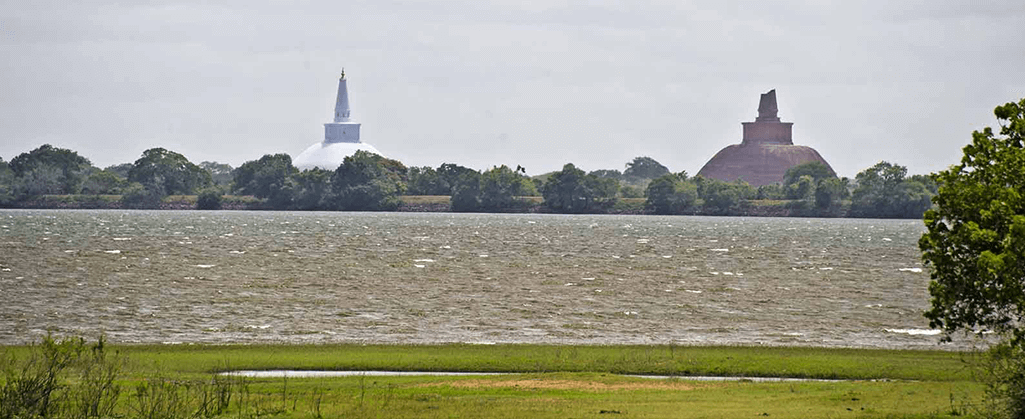
Is one of the ancient capitals of Sri Lanka and is world famous for its well preserved ruins of the Great Sri Lankan Civilization. The Civilization which was built upon this city was one of the greatest civilizations of Asia and in the world. Anuradhapura, considered the most sacred town of Sri Lanka, can be termed the birthplace of Sinhala civilisation.
Is one of the ancient capitals of Sri Lanka and is world famous for its well preserved ruins of the Great Sri Lankan Civilization. The Civilization which was built upon this city was one of the greatest civilizations of Asia and in the world. Anuradhapura, considered the most sacred town of Sri Lanka, can be termed the birthplace of Sinhala civilisation.
The city now a UNESCO heritage site, was also a wealthy city which created a unique culture and a great civilization. Today this ancient city of Sri Lanka, which is sacred to the Buddhist world, which its surrounding monasteries covers an area of over sixteen square miles ( 40 km²) and is one of the world's major archaeological sites.
Major attractions

Sri Maha Bodhi
An offshoot of the historical Bodhi tree under which Buddha became enlightened was planted in Anuradhapura in 288 BC. It is the oldest living human-planted tree in the world.
Ruwanveli Saya
Among the stupas of Anuradhapura, Ruwanveli Seya is the most popular among the adherents of Buddhism. It had been once the the pride of the Great Emperor Dutugamunu. Erected in the 2nd century B.C. this dagoba is supposed to once have the perfect water bubble shape. Larger-than-life man idol is the most famous among the idols of Anuradhapura. Ruwanwelisaya Stupa is considered a marvel for its architectural qualities.


Samadhi Statue
The Samadhi Statue carved from granite is 8 feet in height and is situated at Mahamevnāwa park in Anuradhapura. This meditate pose of Buddha is called “Dhyana Mudra”, sitting cross-legged with his upturned palms placed one over the other on the lap and the posture of meditation associated with his first Enlightenment The image of the Samadhi Buddha one of the finest pieces of Buddhist sculpture that shows 3 different features when you look at the face of the statue from three sides.
Jethawana Monastery
Mahinda Thera who introduced Buddhism to Sri Lanka had been cremated at the place where the monastery complex stands today. Built by King Mahasena (276-303AD) the Jethavanaramaya stupa at 120m high was the third tallest monument in the world at the time when Roman Empire disintegrated.


Abhayagiri Monastery
Abhayagiri is the largest monastery complex here. Built in the in the second century BC by King Valagamba it evolved as an institution of world fame by the first century AD. Buildings as well as a Buddhist temple are located in the monastery. The stupa is 108 metres tall. Once it was among the tallest brick structures in the world. Most acclaimed Buddhist sculpture is the Samadhi Idol, built in 3rd century AD. Abhayagiri Dagaba-is one of the most sacred Buddhist pilgrimage towns and extensive ruins in the world.
Thuparamaya Temple/ Guard Stone
Considered to be the first dagoba built in Sri Lanka, Thuparama Temple is believed to enshrine the collarbone relic of Lord Buddha. Similar Guard Stones are generally found in pairs at the entrance to temples, palaces and other venerated sites.


Lovamahapaya
Also known as Brazen Palace Lovamahapaya is a complex which was once a structure of its own class.
Mirisaveti Stupa
It was built by King Dutugamunu after defeating King Elara. A legend associates it with the relics of Lord Buddha.


Lankarama
This is a stupa constructed by King Valagamba in an ancient place.
Museum
Assemblage in the Folk Museums gives us the illustrations of the rural life in the province and how it has been developing from hundreds of years. Archaeological Museum, located near it, displays the excavations attained from Abhayagiri temple explorations.


Isurumuniya Temple
Isurumuniya temple erected in the 3rd century B.C. is appreciated for its rock carvings. 'Lovers' is the best known carving among these. It has been the inspiration behind many a poet and song writer. Saliya the son of the great monarch Dutugamunu loved a low-caste maiden. People believe that the carving represents them.
Mihintale
Temple of Mihintale holds considerable importance in the history of Sri Lanka. This is where Thero Mahinda, the son of Great Indian Emperor Ashoka introduced Buddhiism to the ruler of Sri Lanka Thissa. Theri Sangamitra, daughter of Ashoka, carried a off shoot of the holy Bo tree under whose shade Buddha had attained nirvana. The tree was planed in Anuradhapura.


Aukana Buddha
The colossal ido, 13 meter high, is carved out of solid granite. Harking back to the 5th century, to the reign of King Dathusena, it is an impressive relic from that age. The statue is known for its architectural accuracy. However the brick enclosure around it has been built recently.
Ritigala
This is another ancient Buddhist monastery at the foothill of 600m high Ritigala Rock. It is known for elegantly paved footpath, several elevated platforms, ruins of an old hospital and remains of a terraced pond.

Polonnaruwa
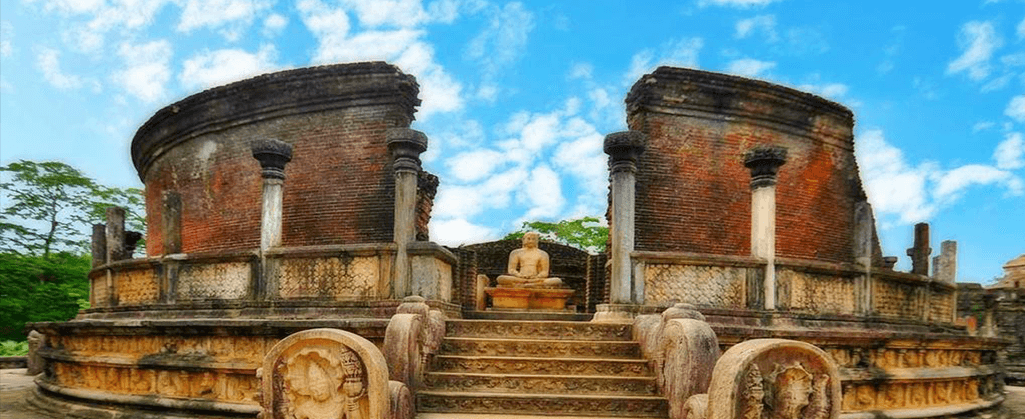
Is the second medieval capital of Sri Lanka after Anuradhapura was devastated and is the best preserved town of the country. Polonnaruwa was established as the capital of Sri Lanka in 11th century AD replacing Anuradhapura. Continuous invasions from South India had forced the kings of Sri Lanka to do so. Polonnaruwa served as the capital of Sri Lanka from 11 AD to 13 AD. Prominent monarchs of this period are King Vijayabahu I, King Maha Parakramabau I and King Nissankamalla.
It possesses ancient dagobas, nice parks, moonstones, colossal structures and elegant statues. Polonnaruwa of today is among the best planned archaeological sites of the country and today the ancient city of Polonnaruwa remains one of the best planned Archeological relic sites in the country, standing testimony to the discipline and greatness of the Kingdom's first rulers.
The ancient city of Polonnaruwa has been declared a World Heritage site by UNESCO.
Major attractions

Parakrama Samudra
Is an irrigation tank built by King Parakramabahu I. It covers an area of 5,940 acres, hence its name, 'Samudra' meaning the sea known as Sea of Parakrama is the dominating structure in the town. It is a massive 12th century man-made reservoir, so vast that it is impossible to view the other bank of the tank while standing on one It has 11 channels directing water to feed a network of irrigation canals and smaller tanks.
Archaeological Museum
Archaeological Museum contains superb Chola bronzes and other artefacts found during excavations in the province for us to imagine how those great rock sculptures done during those centuries.


Potgul Vehera (Library Museum)
Here you will find four small dagabas surrounding a circular brick building on the central platform. The acoustics of this building are excellent and this has led to the suggestion that it was a lecture theatre where the tenets of Buddhism were read aloud.
Statue of King Parakramabahu I
Statue of King Parakramabahu I or Agastaya is a huge 12th Century AD rock sculpture. A barefoot figure clad only in sarong, stands out of the rock from which he was carved. His broad face has a look of seriousness and he is holding a sacred manuscript from which he appears to be reading aloud. However, the subject of the statue is a matter of debate. Was it Agastaya or King Parakramabahu I ?


The Royal Palace of King Parakramabahu
The Royal Palace of King Parakramabahu I - built in the 11th Century. The massive brick walls of the main hall stand amidst the ruins of about 40 inter-connecting rooms. The palace originally rose to seven storeys, however since the upper floors were wooden, no trace of them remains now. The Kumara Pokuna, the handsome royal bath, is a bit further on from here. The Royal pavilion still has its lion portals, graceful pillars and a moonstone (a delicately carved stepping stone).
Audience Hall
Audience Hall contains exquisite stone carvings, bas-relief elephants support the base of this building and the entrance has two flights of steps with moonstones flanked by mythical dragons.


Kumara Pokuna
Kumara Pokuna is where the ladies of the court would have taken their evening bath.
Dalada Maluwa (The terrace of the Tooth Relic)
The centrepiece of the ancient city. It was a sacred precinct containing 12 magnificent buildings. Today it is known as the Quadrangle.


Vatadage(a circular stupa house with roof)
Built in the 7th Century, it is one of the oldest monuments in Polonnaruwa.
Thuparamaya image house
Thuparamaya is an image house built in the 3rd Century BC for the worship of Lord Buddha. It is built in a style of the original form of architecture that flowered at Polonnaruwa. The barrel-vaulted and domed buildings had very thick brick walls, stuccoed and painted with figures and architectural subjects. The roof is still intact and several images in the interior are preserved.


Atadage (House of Eight Relics)
This was the first Tooth Temple built by King Vijayabahu in the 11th century. This is a neat plantation of 54 stone columns. A statue of Lord Buddha, almost 3 m (10 ft) in height, stands amongst the columns.
Hatadage
Hatadage Relic Shrine resembles the Atadage in plan and name and was built for the same purpose. Its thick stone walls still contain three carvings of Lord Buddha.


Galpota(Stone Book)
An inscription recording the foundation and embellishment of the city.
Sathmahal Prasada (Seven-Storeyed Stupa)
Has an unusual stepped pyramidal form. The design of this contributes significantly to the study of stupa evolution.


Pabulu Vehera
A brick dagaba built by Queen Rupavati - one of King Parakramabahu's queens. It is surrounded by image houses.
Shiva Devale
Shiva Devale is a Hindu shrine. It is the only all-stone temple still in perfect condition. This shrine was built in the 11th Century and some superb bronze statues were found within.


Menikvehera
Menikvehera appears to be constructed in at least two stages, and the first stage dates around the 8th Century AD. The stupa is built on a high walled terrace with a small lotus-shaped stupa in the centre. It is unique in its design.
Alahana Pirivena
Alahana Pirivena was a Buddhist monastic university. It consisted of many separate apartments laid out to a regular plan. Each apartment was two-storeyed with tiled roofs and had its own living unit. However, the bath-house, refectory and other facilities were shared.


Rankotvehera(Golden Pinnacle)
One of the two big stupas of the Alahana Pirivena monastic complex.
Buddha Sima Pasada
Buddha Sima Pasada was a chapter house. Its sacred functions were to enforce the rules of the Buddhist priests.


Lankathilaka
The walls of this image house soar to a height of 16 m (55 ft). Inside the shrine stands the headless statue of a Lord Buddha and the interior walls are adorned with murals. The outside walls are horizontally divided into five floors. Inside is a single tall space, which is now open to the sky but must have had a type of domed roof.
Kirivehera (Milk White House)
One of the two big stupas of the Alahana Pirivena monastic complex. It is the best-preserved dagaba with its original lime plaster stucco intact and the remains of small structures cluster around it.


Galvehera
Galvehera is one of the most famous sites in Sri Lanka. It consists of three figures of Lord Buddha carved out of a cliff of granite. The first figure is a sitting Buddha with an artificial cavern cut out of the rock. The other two are an upright Buddha and a reclining Buddha. The reclining Buddha is 14 m (46 ft) in length.
Lotus Pond
Within the Jetavanarama Monastery is this elegant pond built in the shape of an open lotus.


Tivanka
Tivanka is the most important building in the Jetavana Monastery. It is an image-house. The name is derived from the image of the Lord Buddha in the narrow antechamber, which is seen in the 'Tivanka' or thrice bent posture. The most important paintings of the Polonnaruwa period were found on the walls of the Tivanka.
Sigiriya
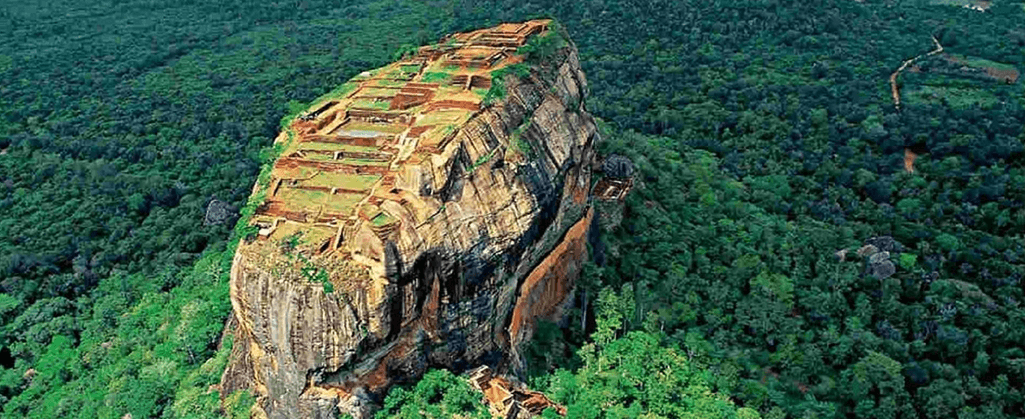
Sigiriya that has spectacular importance in Sri Lanka with the Sigiriya Rock known as the Lion's Rock, was basically established in 477AD as a fortress and palace on the Sigiriya Rock. However, in the 16th and 17th centuries the place served as a monastic refuge. Sigiriya preserves the architectural tradition of the country, An ancient palace complex on the summit of Sigiriya Rock, erected during the reign of King Kasyapa, has been declared by UNESCO a world heritage site. The Lion staircase leading to the palace garden on the summit was the most important part of the Rock. The covered staircase was made of bricks and timber. However now only two massive paws and brick masonry remains. The Paintings of bare-breasted women were done over 1500 years ago.
The town is famous for its Rock juts out 200 metres from the land surrounding, Gardens and Sanctuary. Sigiriya gardens are the amalgamation of symmetrical and asymmetrical elements. Detailed planning has been done for laying these gardens. One can pass a wonderful day in the sanctuary of Sigiriya. Many experienced tourists call Sigiriya the most favourable place in Sri Lanka to visit.
Sigiriya Wildlife Sanctuary encircles the renowned Sigiriya rock. It is close to the Minneriya National park. Vegetation here is mainly dry evergreen forest, shrub forests, and dry deciduous forest. Many elephant herds live in this wildlife sanctuary Sambar, eagle and falcon are other common creatures found in the sanctuary
Major attractions

Water Gardens
The Water Garden, lying on the western precinct, has water pavilions, pools, cisterns, courtyards, conduits and water courses. These possessions are enough to entertain the visitors.
Boulder Garden
Boulder Garden is a distinct organic or asymmetrical concept. The garden with natural boulders and winding pathways is a nice place to visit with your family. The Cistern Rock has a big cistern made of massive slabs of granite. Another rock has a garden carved out on it.


Terrace Garden
This Garden is carved out of a natural hill. All terraces lie in a concentric circle ringing the rock, systematically rising above the other.
Palace Garden
This garden has lots of terraces and pools cut in rocks. It was the domestic garden with plenty of terraces and rock cut pools. The Garden lies at the top of the summit.

Dambulla
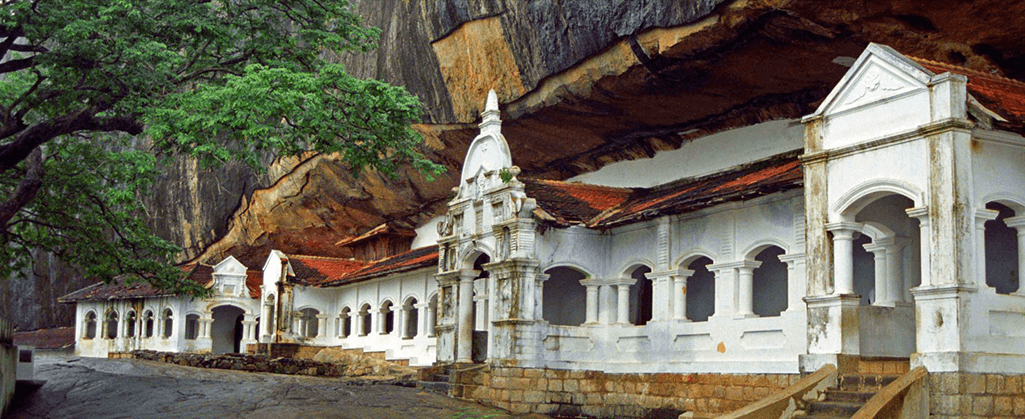
Dambulla is best known for its wonderful cave temple complex dating back to 2nd century BC. Even before the making of the complex it was well established as one of the largest monasteries in Sri Lanka. Credit of converting the caves into a temple in the 1st century BC goes to King Valagambahu. The site was added to by several kings later. In the course of several centuries, the caves became a major religious centre. Preserved diligently by Sri Lanka, Dambulla caves have been declared a World Heritage Site by UNESCO. The cave complex is a conglomeration of five caves holding magnificent statues and elegant scriptures.
Famous Iron Wood Forest (Namal Uyana) and Rose Quartz Mountains which are famous for bird watching, add to the glory of Dambulla. Iron Wood Forest is considered the oldest garden in Sri Lanka. King Dappula declared the site a human sanctuary in 10th century AD. Hundreds of variety of plants were planted here. Rose Quartz mountain range, more than 500 million years old, are geologically important. The site has quartz deposits of white, rose and violet color.
Cave Complex
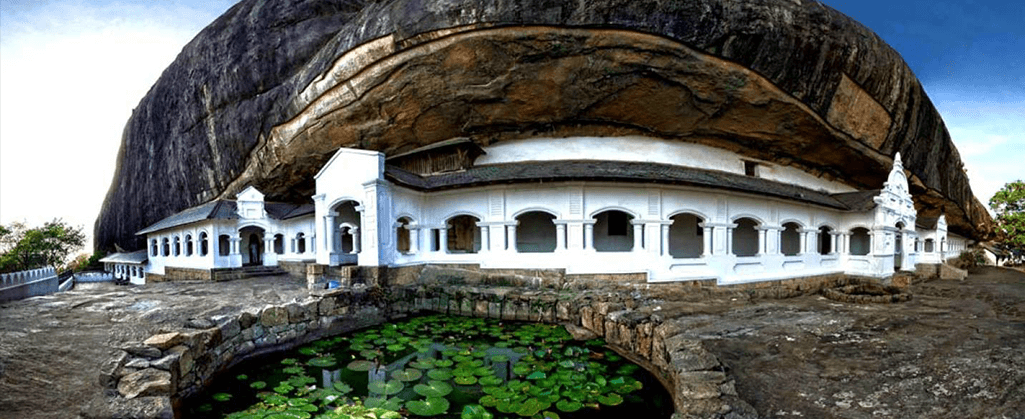
Best preserved cave temple complex in Sri Lanka has highlighted Dambulla on the world tourist map. The rock inside which the temples are carved out towers 160m over the neighboring plains. The complex holds more than 80 documented caves. This is an impressive complex of 5 cave image houses containing more than 150 Buddha and other idols. Elegantly painted walls and ceilings add to impact of the place. The cave complex has the total of 153 Buddha idols, 3 statues of Sri Lankan monarchs and 4 idols of deities. The five caves have been built at the base of a 150 m high rock. The largest cave is 23m from its entrance to back and at the highest point it is 7m tall.

First Cave
First cave is locally called Devraja Lena or 'Cave of the Divine King'. The cave has towering presence of 14-meter Buddha statue, hewn out of rock.
Second Cave
Second cave, also the largest, is called Maharaja Lena or 'Cave of the Great Kings', for it hosts largest statues of King Vattagamani and King Nissanka Mala. The former monarch honored the monastery in 1st century BC while the latter gilded 50 statues in the 12th century.


Third Cave
Third cave is Maha Alut Vihara or 'Great New Monastery'. During the rule of King Kirti Sri Rajasinha (1747-1782), the famous Buddhist revivalist, acquired Kandy style ceiling and wall paintings. er.
Fourth and Fifth Caves
Fourth and fifth caves are not as big in size and lack in quality.

Kandy
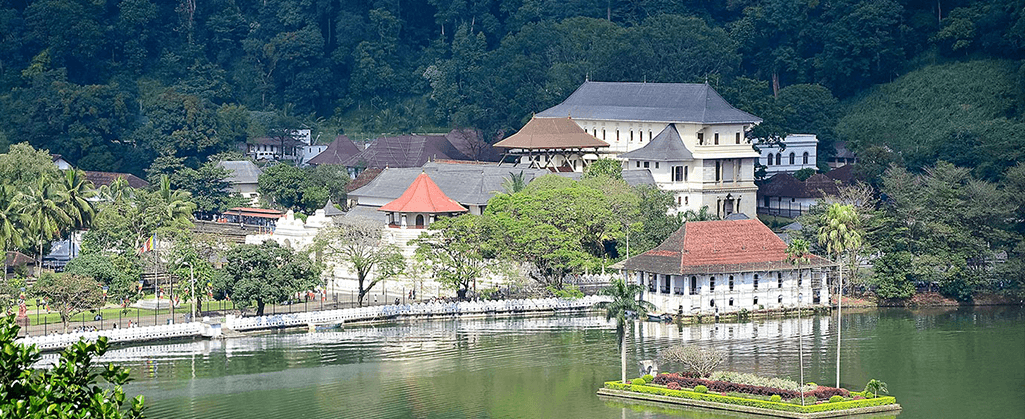
Kandy is a city in the center of Sri Lanka. It was the last capital of the ancient kings' era of Sri Lanka. The city lies in the midst of hills in the Kandy plateau. Kandy is one of the most scenic cities in Sri Lanka. Kandy stayed independent until the early 19th century. In the Second Kandyan War, the British launched an invasion that met no resistance and reached the city on February 10, 1815. On March 2, 1815 when Kandy the last capital of Sri Lanka taken over by British then the last king of the kingdom Sri Vikrama Rajasinha was captured and taken as a royal prisoner by the British.
Kandy, a major tourist destination in the country, is also called the cultural capital of Sri Lanka. The town has eminent tourist attractions like the Temple of Tooth and the Old Royal Palace- is the home of The Temple of the Tooth Relic one of the most venerable places for the Buddhist community of Sri Lanka and all around the world. It was declared a world heritage by the UNESCO in 1988. Kandy is a nice transit point to tour cultural north or hilly south.
Major attractions

The Temple of Tooth Relic
Is the most important venerable places for the Buddhist community of Sri Lanka and all around the world and foremost travel attraction of the town. One of the Buddha's teeth is kept in the temple. The temple was constructed in the 16th century but several additions have been done in it. A golden canopy has been recently added. For entering the temple a dress code has to be followed. The temple follows a set of daily rituals. It was declared a world heritage by the UNESCO in 1988.
Esala Perahera Festival
Kandy is very popular due to the annual pageant known as the Esala Perahera in which one of the inner caskets used for covering the tooth relic of Buddha is taken in a grand procession through the streets of the city. This casket is taken on a royal tusker. The procession includes traditional dancers and drummers, flag bearers of the provinces of the old Kandyan kingdom, the Nilames (lay custodians of temples) wearing their traditional dresses, torch bearers and also the grandly attired elephant. This ceremony which is annually held in the months of July or August, attracts large crowds from all parts of the country and also many foreign tourists.


Old Royal Palace compound
You can tour old royal palace, quarters of the royal concubines; queen's chambers the council chambers and the armoury. Many of these places are now used a museums presenting the articles of Kandyan era. Chambers of the Royal Palace are nice specimen of Kandyan wooden architecture. The Palace is the witness of so many important cultural events in the history of Sri Lanka.
Hindu Shrines
Three major Hindu shrines are located at a stone's throw from the Temple of Tooth. Lords Vishnu, Natha and Goddess Patthini sit in these shrines. Although most people visiting these temples are Buddhists Hindu rituals and customs are followed here. The shrines testimony that Tamils and Buddhists have co-existed here for long time.


Royal Botanical Garden
Royal Botanical Gardens which once served as a pleasure garden of a Kandyan Queen has numerous tropical foliage. It is reputed as one of the best gardens in the island. and the best in the island. The allied forces had their regional headquarters in the garden during the Second World War.
Gadaladeniya Temple
This temple, made in 14th century, is located 15km off the town. Built on a rock, the temple has been inspired by the South Indian style of architecture.


Lankatilake Temple
Lankatilake temple is a fine place located on a lovely location. It is an elegant structure decorated by fine paintings.
Embekke Temples
Embekke Temples, built in 14th century, are adorned with intricate wooden carvings. The temple is dedicated to God Kataragama. A Buddhist place neighbors the Embekke Temple. The temple is bedecked with the carvings of dancers, musicians, wrestlers, beasts and birds.


Elephant Orphanage Pinnawala
Is an orphanage, nursery and captive breeding ground for wild elephants located at Pinnawala village. The orphanage established in 1975 by the Sri Lanka Department of Wildlife Conservation, was founded to care and protect the many orphaned unweaned wild elephants found wandering in and near the forests of Sri Lanka. It has the largest herd of captive elephants in the world. There are 3 generations living in the orphanage including males, females and little ones with different ages.
All visit the orphanage to catch the excitement of watching the baby elephants being fed with bottles and also how playful even the older ones are in the river during two sessions morning and afternoon daily.
Galle
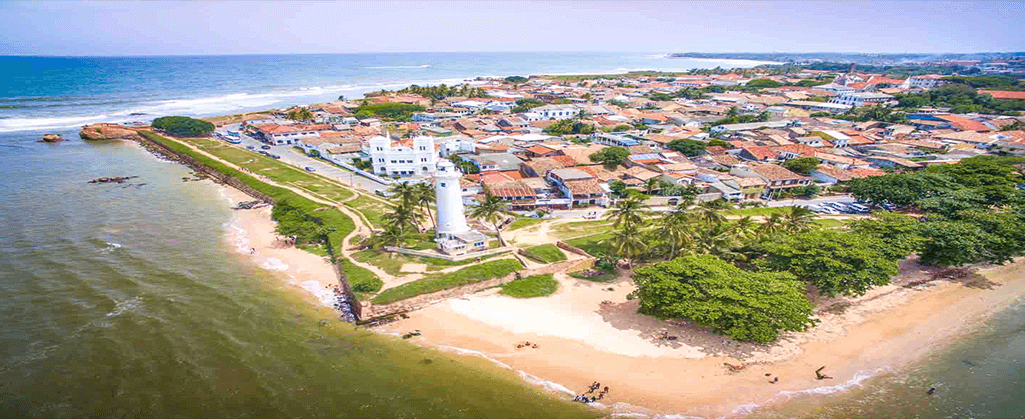
Galle was known as Gimhathiththa before the arrival of the Portuguese in the 16th century, when it was the main port on the island for exporting spices and valuables to Persians, Arabs, Greeks, Romans, Indians & Chinese. In 1640, the Dutch took over Galle and the city was extensively fortified by the Dutch during the 17th century from 1649 onwards and reached the height of its development in the 18th century, during the Dutch colonial period. Galle is the best example of a fortified city built by the Portuguese in South and Southeast Asia, showing the interaction between Portuguese architectural styles and native traditions. The Galle fort is a World Heritage Site and is the largest remaining fortress in Asia built by European occupiers.
After the British took over the country from the Dutch in the year 1796, they preserved the Fort unchanged, and used it as the administrative centre of the district.



